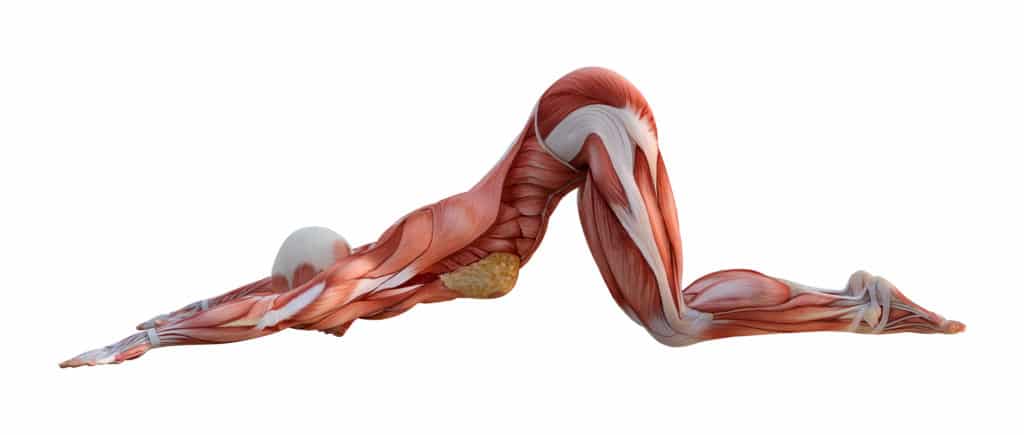Last updated: March 20, 2020

One particular example of this concern came from a physiotherapist who tried to convince a yoga studio owner to drop Yin Yoga from the schedule. The therapist’s concern was
Holding poses for 5 to 6 minutes is simply not good for the body; in general it places too much strain on the muscles.
The first point to make here is that Yin Yoga is practiced with the muscles relaxed, not engaged. This means that there is no active strain created in the muscles, although there may be a passive strain. So, let’s discuss whether passively stretching muscles for a long time is unhealthy.
Of course, it is possible to do too much of anything, and that includes generating and holding a stress in the muscles that is too large and/or for too long. But this does not mean that all stresses on the muscles are detrimental. It depends on the quantity and time. Plus, in Yin Yoga the student is advised to relax the muscles so that the stresses generated in the posture can “soak” into the joints. Contracting muscles tend to tighten joints, shortening them, which prevents the joint from opening and prevents the stress of the posture reaching the joint capsules. Since we are deliberately targeting joint capsules (among other fascial areas), it is a good idea to practice Yin Yoga with muscles relaxed and unstressed. (A deeper explanation of why tightened or cold muscles experience more stress than warm or relaxed muscles is offered in the article Warm Muscles, Cold Muscles.)
Paul Grilley offered another explanation for why we perform Yin Yoga with relaxed muscles in a Yoga Journal article:
[While doing Yin Yoga]… the overlying muscles must be relaxed. If the muscles are tense, the connective tissue won’t receive the proper stress. You can demonstrate this by gently pulling on your right middle finger, first with your right hand tensed and then with the hand relaxed. When the hand is relaxed, you will feel a stretch in the joint where the finger joins the palm; the connective tissue that knits the bones together is stretching. When the hand is tensed, there will be little or no movement across this joint, but you will feel the muscles straining against the pull.
It’s not necessary—or even possible—for all the muscles to be relaxed when you’re doing some Yin Yoga postures. In a seated forward bend, for example, you can gently pull with your arms to increase the stretch on the connective tissues of your spine. But in order for these connective tissues to be affected, you must relax the muscles around the spine itself. Because Yin Yoga requires that the muscles be relaxed around the connective tissue you want to stretch, not all yoga poses can be done effectively—or safely—as yin poses.
Standing poses, arm balances, and inversions—poses that require muscular action to protect the structural integrity of the body—can’t be done as yin poses. Also, although many yin poses are based on classic yoga asanas, the emphasis on releasing muscles rather than on contracting them means that the shape of poses and the techniques employed in them may be slightly different than you’re accustomed to.[1]
Thomas Myers, anatomist and author of Anatomy Trains, has stated that sustained stretches are required to allow muscles to relax so that the fascia starts to stretch and release.
…generally, the sustained stretches of yoga where you hold a posture for several minutes (as you do in many yoga styles) give the muscles a chance to calm down. The muscles have to relax first, and then the fascia starts to stretch and release. And that can facilitate the kind of repatterning that leads to lasting release of chronic holdings and, in many cases, a profound change of mind and body.[2]
It is okay to allow a stress to last for several minutes even though the stress may be felt in the muscles. The idea is to keep the muscles relaxed as much as possible during this period.
However, there sometimes arises an opposite concern,
Passively holding in a stretched position without muscular engagement is not a good idea. Muscles should be engaged to protect joints and ligaments.
In this case we have the opposite concern, not that muscles will be overstressed by holding for too long during a Yin Yoga practice, but that muscles will not take the stress off the deeper tissues, which could destabilize the connective tissues. This has already been addressed in the concern To protect joints, we must engage muscles, not relax them.
Return to Topics
[1] Paul Grilley, “Why Try Yin Yoga?,” Yoga Journal (August 2007; updated April 2017).
[2] Eva Norlyk Smith, “Creating Change: Tom Myers on Yoga, Fascia and Mind-Body Transformation,” HuffPost (December 2013; updated February 2014).
